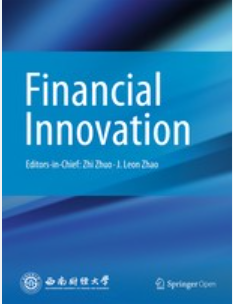用于随机数据包络分析的公司特定马尔奎斯特生产力指数模型:商业银行应用
IF 7.2
1区 经济学
Q1 BUSINESS, FINANCE
引用次数: 0
摘要
在数据包络分析(DEA)文献中,Malmquist 生产率指数所反映的生产率变化,尤其是在确定性环境以及投入和产出的随机变异性方面的生产率变化,在某种程度上被忽视了。因此,本研究建立了一个基于 DEA 的特定企业 Malmquist 指数模型,以考察随机环境下银行的效率和生产率变化。首先,为了估计特定银行的效率,我们采用了两阶段双引导 DEA 程序。具体来说,在第一阶段,通过经典 DEA 模型计算银行的技术效率得分,而在第二阶段,应用双引导 DEA 模型确定环境变量对银行效率的影响。其次,我们采用了两阶段程序来衡量生产率的变化,其中第一阶段包括随机技术效率的估算,第二阶段包括将估算的效率分数与一系列影响相对绩效的解释变量进行回归。最后,对伊朗银行业进行了实证调查,包括对 15 家银行从 2014 年到 2021 年的 120 个银行年的观察,以衡量其效率和生产率变化。调查结果显示,解释变量(即不良贷款率和分支机构数量)与随机技术效率和生产率变化呈反向关系。研究结果的含义是,为了提高银行的效率和生产率,必须优化这些因素。本文章由计算机程序翻译,如有差异,请以英文原文为准。
A firm-specific Malmquist productivity index model for stochastic data envelopment analysis: an application to commercial banks
In the data envelopment analysis (DEA) literature, productivity change captured by the Malmquist productivity index, especially in terms of a deterministic environment and stochastic variability in inputs and outputs, has been somewhat ignored. Therefore, this study developed a firm-specific, DEA-based Malmquist index model to examine the efficiency and productivity change of banks in a stochastic environment. First, in order to estimate bank-specific efficiency, we employed a two-stage double bootstrap DEA procedure. Specifically, in the first stage, the technical efficiency scores of banks were calculated by the classic DEA model, while in the second stage, the double bootstrap DEA model was applied to determine the effect of the contextual variables on bank efficiency. Second, we applied a two-stage procedure for measuring productivity change in which the first stage included the estimation of stochastic technical efficiency and the second stage included the regression of the estimated efficiency scores on a set of explanatory variables that influence relative performance. Finally, an empirical investigation of the Iranian banking sector, consisting of 120 bank-year observations of 15 banks from 2014 to 2021, was performed to measure their efficiency and productivity change. Based on the findings, the explanatory variables (i.e., the nonperforming loan ratio and the number of branches) indicated an inverse relationship with stochastic technical efficiency and productivity change. The implication of the findings is that, in order to improve the efficiency and productivity of banks, it is important to optimize these factors.
求助全文
通过发布文献求助,成功后即可免费获取论文全文。
去求助
来源期刊

Financial Innovation
Economics, Econometrics and Finance-Finance
CiteScore
11.40
自引率
11.90%
发文量
95
审稿时长
5 weeks
期刊介绍:
Financial Innovation (FIN), a Springer OA journal sponsored by Southwestern University of Finance and Economics, serves as a global academic platform for sharing research findings in all aspects of financial innovation during the electronic business era. It facilitates interactions among researchers, policymakers, and practitioners, focusing on new financial instruments, technologies, markets, and institutions. Emphasizing emerging financial products enabled by disruptive technologies, FIN publishes high-quality academic and practical papers. The journal is peer-reviewed, indexed in SSCI, Scopus, Google Scholar, CNKI, CQVIP, and more.
 求助内容:
求助内容: 应助结果提醒方式:
应助结果提醒方式:


